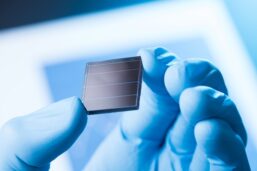 India & Australia Forge Partnership for Green Hydrogen Taskforce
India & Australia Forge Partnership for Green Hydrogen Taskforce The draft National Hydrogen Mission document has already gone through the consultation process and is expected to be finalised in February 2021

In the Budget Speech 2021-22, Finance Minister Nirmala Sitharaman proposed to launch a National Hydrogen Mission for generating hydrogen from green power sources. The ministry has now announced that the draft mission document has already gone through the consultation process and is expected to be finalised in February 2021. Thereafter, it will go through inter-ministerial consultation and the Cabinet approval process.
In her speech, Sitharaman said “Prime Minister, while speaking at the 3rd RE-Invest Conference in November 2020, had announced plans to launch a comprehensive National Hydrogen Energy Mission. It is now proposed to launch a Hydrogen Energy Mission in 2021-22 for generating hydrogen from green power sources.”
The proposed National Hydrogen Energy Mission would aim to lay down the Government of India’s vision, intent and direction for hydrogen energy and suggest strategies and approaches for realising the vision. The Mission would put forward specific strategy for the short term (4 years), and broad strokes principles for the long term (10 years and beyond).
The aim is to develop India into a global hub for the manufacturing of hydrogen and fuel cells technologies across the value chain. Toward this end, a framework to support manufacturing via suitable incentives and facilitation aligned with ‘Make in India’ and ‘Atmanirbhar Bharat’ will be developed. It will provide the necessary flexibility to capture benefits from advances taking place in the technology landscape.
It has also been specified that the Government of India will facilitate demand creation in identified segments. Possible areas include suitable mandates for use of green hydrogen in the industry such as fertiliser, steel, petrochemicals, etc. Major activities envisaged under the Mission include creating volumes and infrastructure; demonstrations in niche applications (including for transport, industry); goal-oriented Research & Development; facilitative policy support; and putting in place a robust framework for standards and regulations for hydrogen technologies.

Further, a production linked incentive (PLI) scheme was announced in the budget 2021-22. For the manufacturing sector to grow in double digits on a sustained basis, manufacturing companies need to become an integral part of global supply chains, by possessing core competence and cutting-edge technology. Accordingly, PLI schemes to create manufacturing global champions for an Atmanirbhar Bharat have been announced for 13 sectors including manufacturing of ‘High Efficiency Solar PV Modules’.
The government has committed nearly Rs 1.97 lakh crore, over 5 years starting FY 2021-22 including Rs 4500 crore for ‘High Efficiency Solar PV Modules’ which will be will be implemented by the Ministry of New & Renewable Energy (MNRE). It will help bring scale and size in Solar PV manufacturing, create and nurture global champions and provide jobs to youth. The PLI schemes will incentivise new Gigawatt (GW) scale solar PV manufacturing facilities in India. The EFC meeting for formulating a scheme in this regard has already been held. It will now be taken to the Cabinet for final approval. The scheme will reward the efficiency of solar modules as well as local value addition.
Under the PLI Scheme, 10,000 MW capacity of integrated solar PV manufacturing plants (from the manufacturing of wafer-ingot to high efficiency modules) will be set up by Q4 of 2022-23 with the direct investment of around Rs 14000 crore.





























